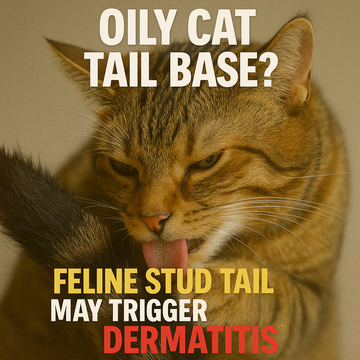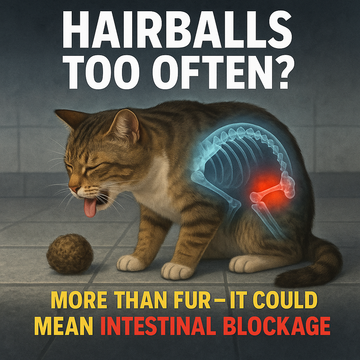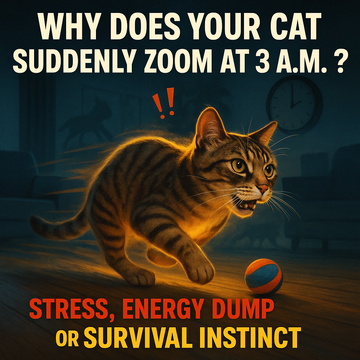Many owners notice greasy, clumped fur at the base of their cat’s tail and assume it’s just dirty. In reality, this may be feline stud tail—an overactive sebaceous gland condition. If ignored, it can cause clogged follicles, bacterial infections, and full-blown dermatitis. Don’t dismiss it as poor grooming—your cat may be dealing with chronic discomfort and hidden inflammation.
1) What Is Stud Tail?

-
The tail base has a special sebaceous gland area that secretes oils to condition fur.
-
Overproduction of sebum → buildup → follicle blockage.
-
Common in intact males, but females and neutered cats can also be affected.
2) Common Symptoms

-
Greasy, clumped, yellowed fur at tail base.
-
Blackheads and small pimples form.
-
Redness, hair loss, foul odor, pus in severe cases.
-
Cats lick or chew tail base excessively, showing irritation.
3) Triggers & Risks

-
Hormones: Intact males produce more androgens.
-
Poor grooming: Long-haired or obese cats can’t clean tail base.
-
Secondary infections: Oil buildup fosters bacteria/fungi.
-
Chronic inflammation: May progress to stubborn dermatitis.
4) What Can Owners Do?

-
Routine cleaning: Use pet-safe wipes or mild cleansers on tail base.
-
Medicated shampoos/ointments: Vets may prescribe benzoyl peroxide or antimicrobial washes.
-
Neutering: Greatly reduces incidence in intact males.
-
Avoid irritants: Never use human shampoos or alcohol—too harsh.
Final Tips
A greasy tail base isn’t “just dirty”—it’s your cat’s body signaling oil imbalance and potential inflammation. Early care and regular cleaning can prevent the vicious cycle of stud tail turning into dermatitis.
We share fresh dog/cat care tips every day—follow us at https://pawcassopet.com/




